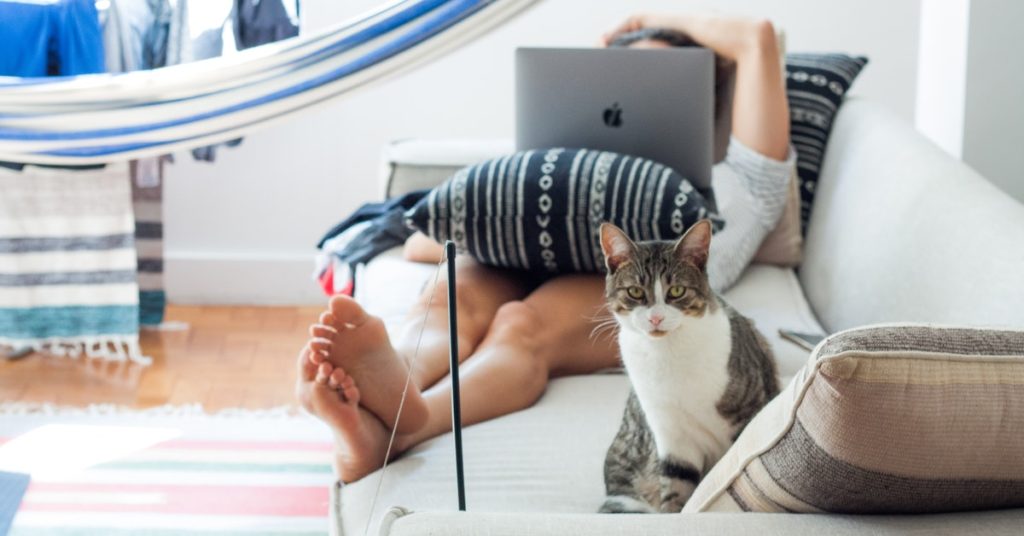WFH Wellness: Feeling Sore? It Could Be Your Work From Home Setup.
We’ve finally started to get used to working from home. But it’s still a pretty big shift, so many of us are starting to experience work-from-home-induced body pain.
Thankfully, we’ve got your back (and neck, and shoulders, and head, and eyes… you get the idea).
Here is our guide to avoiding and relieving pain that happens when we work from home.
Neck, Shoulder, & Head Pain
This one is all about your work station. Since laptops are typically smaller and sit lower than most office computer monitors that you may be used to from your desk at work, it’s easy to bend your neck forward or twist it in an unnatural way to see your laptop screen without realizing you’re doing it. You can also strain your neck and shoulders by looking down while reading documents on iPads or other devices flat on the table. Both of these actions can trigger headaches, too. To boot, if you’re reaching unnaturally high or low for your keyboard or mouse, you’re overusing your arms which can further trigger shoulder and neck pain.
How to prevent it:
Put your screen at a comfortable viewing height to avoid needing to look down as if you were looking down at a screen or your phone. Make sure your screen isn’t angled in a way that requires you to twist your neck and try placing it straight on. We love using adjustable standing desks, but if you don’t have one, a pile of books will do the trick to place your laptop at a comfortable height. If you’re reading documents, use a vertical document holder or put iPad on a stand. Again, you can makeshift one from items around your house like books or even plates.
Eye Strain
This one is very common in a work from home setup, because, at most of our offices, we have fluorescent lighting. You may have despised the lighting before, but when we’re at home, more natural light is hitting our screens. This tends to cause us to squint, which causes eye strain.
How to fix it:
Prioritize good lighting in your workspace and avoid direct sunlight on your computer. To minimize the chance of eye strain from the glare, avoid working with your back to a window. Unless it has shades that can be closed, you’ll be staring into the light without fully realizing it. Working on a glass table? Cover it with a tablecloth or something similarly effective to prevent a reflecting glare.
Upper Back Pain
Some meetings may have you on the edge of your seats, but physically sitting on the edge of your seat or leaning forward in your chair can trigger upper-back pain.
How to fix it:
Sit back in your chair with your hips slightly higher than your knees. Sometimes it can be helpful to use a rolled-up towel or small pillow– if you feel the towel or pillow begin to fall or slide, it means that you’re leaning forward.
Lower Back, Knee, & Foot Pain
This one is all about posture and foot support. We start to slouch within 10 to 15 minutes of sitting, which can cause back pain almost instantly.
When we work from home, we also tend to tuck our feet underneath our chairs or let them dangle without touching the ground. This can restrict blood flow to our lower legs and feet and put pressure under our thighs. Furthermore, if our feet don’t touch the ground or are positioned in an incorrect way, gravity alone can pull on our legs, which then strain the lower back, feet, and knees.
How to fix it:
Practice good posture (you can even use a posture trainer a few minutes a day. In addition to that, intentionally stand every hour or so for 5 to 10 minutes at a time to reset your posture and improve your leg circulation/reduce tightness. We can also make an effort to intentionally place our feet firmly on the floor. If they don’t reach, consider using a pile of books or a footrest.
Stay in the loop with us here at StarterNoise during this crazy time of COVID-19, and get the scoop on the big things, follow us on Twitter.



